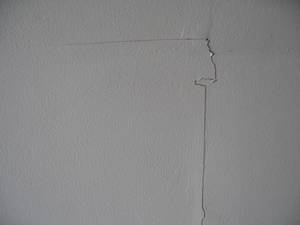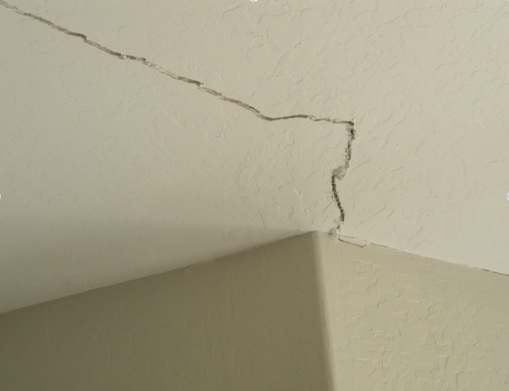Crack At Ceiling Wall Joint
Change dmg to iso. A new product that reattaches plaster without leaving behind difficult-to-disguise bumps
Dec 15, 2018 Cracks that cause concern are those which run across the length of a ceiling and then continue down a wall along the same line. This is a sign of structural damage, usually related to a weak wall. A crack is continuous though the wall and ceiling Ceiling cracks that run across the ceiling to the wall and then downward on the wall; basically a continuous crack going through the ceiling and the wall. This type of crack suggest that there may be a structural issue, i.e. A foundation issue or framing issue. Repair a hole or crack in drywall, plaster and even wood by using this Hyde Wet and Set Patented Wall and Ceiling Patch.

Using a 3/8-inch masonry bit, drill through the plaster on both sides of the crack. Stop drilling when you hit the wood lath.
Like death and taxes, there's a certain inevitability about the cracks that happen in plaster walls and ceilings. When a plaster wall or ceiling breaks loose from its wood lath, it has a simple way of letting you know: it cracks. That's why simply filling a crack with spackle joint compound is pointless; it just comes back. The only sure fix is to reunite plaster with its lath. For years, homeowners have done just that by screwing plaster washers into the lath and covering the cracks with mesh tape. But the washers and tape stick out from the wall and the process of covered them with layers of joint compound requires a fair amount of skill and patience.
Now there's a new product that reattaches plaster without leaving behind difficult-to-disguise bumps. Big Wally's Plaster Magic repair kit uses a two-part adhesive to glue the lath and plaster back together, so a spackle is all it takes to make the repair disappear. Rory Brennan, a Vermont-based plaster restoration expert, developed this homeowner-friendly system after years of using drums of similar adhesives on large-scale plaster-repair projects.
Drill holes on both sides of the cracks If you miss lath, mark the holes with a pencil so you know not to put any adhesive in it.
Media player 11 codec pack. . Application Tuning - Changes the default settings for Media Player Classic, NVIDIA 3D Vision Player, and Stereoscopic Player. Package Utilities:. Media Player Classic Home Cinema 1.8.7 x86 (XP/2000 version is 1.6.8) - Selectable by right clicking on any file. Disc Handler - For double click playback on BluRay disc icons in Windows Explorer.
I used Big Wally's this winter on the cracked and bulging plaster in my hallway walls and ceiling. Following the directions on the package, I drilled a series of holes through the plaster, stopping when I hit the lath, then squirted the milky conditioner into the same holes. The old plaster sucked this stuff up like a sponge, and became rock hard once the conditioner dried. Next I caulk-gunned the thicker adhesive into the holes and clamped the lath to the back side of the plaster with drywall screws and big plastic washers. Neither glue has any odor to speak of, and both of them wash up with water. (As I learned, if you don't flush the conditioner out of the spray head, it gets completely gummed up.) After the glue set in a day or two, I backed out the screws, popped off the washers, and filled the holes. A quick skim coat finished the job to my satisfaction.
Crack At Ceiling Wall Joint Installation
Here, 'Big Wally' himself, Rory Brennan, demonstrates technique for Ask This Old House. (Stay tuned to see Rory in action when Ask airs its sixth season on PBS in October.)
Spray the conditioner in all the holes.
So far, Big Wally's has lived up to its promise; my repairs remain solid and crack free. Just be warned that this job demands a lot of patience, an unwavering attention to detail, and a high tolerance for dust, drips, and the occasional drilling mistake. If that's not you, show your painter how Big Wally's works and let him fix your walls. (They have to be primed and painted anyway once the holes are filled.) Just be warned: once you start a repair, you'll begin to seeing more areas that need attention. Better to buy more than you think you need, than to run out of adhesive halfway through the job. (In my own particularly bad walls, one tube was sufficient for about 3 lineal feet of 8-foot wall.)


The same goes for the plastic washers. Big Wally's supplies 15 in its approx. $85 Painter's kit, but I needed many more. You can stock up with a 1,000-count container from Demandproducts for approx. $40; .